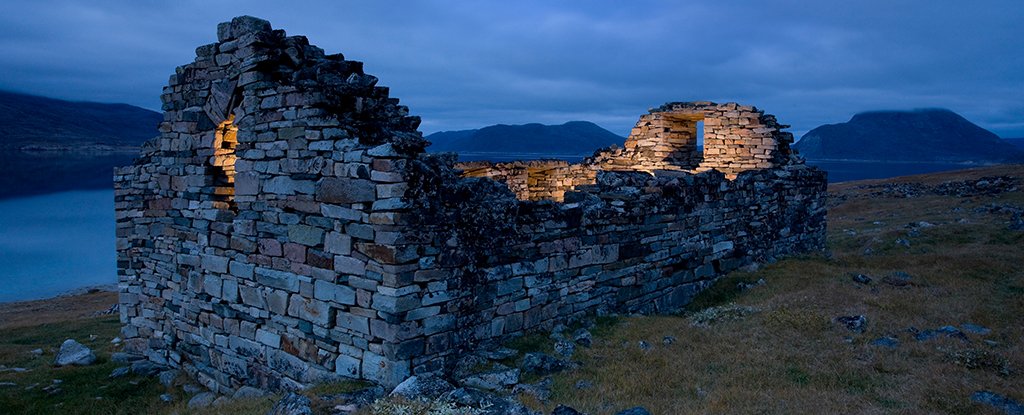For the better part of four centuries, Greenland's southern coast defined the westernmost edge of Viking occupation.
Seduced by visions of verdant hills and fertile ground, in the late 10th century waves of Norse migrants set sail in hopes of an easier life abroad. At its peak, the colony's population numbered in the thousands, spread out across three major settlements.
And then it ended. No word of hardship. No record of struggle. By the middle of the 15th century, the Norse experiment in Greenland was a bust.
New research suggests we might have had it all wrong about the prime cause of the collapse, shifting the focus from extreme cold to extreme drought.
Historians have speculated that the cause of the colony's collapse could have been anything from sudden violence at the hands of an invading culture to a gradual decline in birth rates, to hardship brought on by a changing climate.
There's little doubt that a variety of factors were at work, but the consensus has tended to see one as critical – an enduring drop in temperatures referred to as the Little Ice Age.
It's an idea a team of researchers from the University of Massachusetts Amherst and University at Buffalo in the US has now found wanting in evidence.
Pointing instead to records of temperature and precipitation buried in the sediment of a site near the remains of an ancient Norse farmstead, the team suggests it was a stark decline in summer rains that made living in Greenland increasingly unviable.
The very name of Greenland itself is a misnomer, intentionally crafted by the founder of the island's Viking colonies Erik 'the Red' Thorvaldsson as propaganda to draw willing settlers in from afar.
Still, those who did come quickly grew accustomed to the long icy winters and extreme remoteness, finding riches in the form of walrus skins and ivory to trade with those back home for dried fruits and timber.
Survival depended on inherited knowledge of raising meager crops and livestock under extreme conditions, while supplementing it with food from the ocean.
As difficult as a Viking life in Greenland sounds, from its establishment in 985 CE the population prospered and expanded over the course of several generations, before disappearing from historical records sometime in the mid-1400s.
The period of settlement also happens to be a period in history that spans the start of a regional cooling in the North Atlantic, leading some historians to suspect that the colony's establishment was only possible thanks to the relative warmth before this cooling period set in.
However, the evidence for this has been rather tenuous, based on ice core data from elevated sites more than 1,000 kilometers (620 miles) away from the nearest Viking colony of the time. What's more, there's good reason to think life was just as cold around the 10th century as it was in the 15th.
"Before this study, there was no data from the actual site of the Viking settlements. And that's a problem," says UMass Amherst geoscientist Raymond Bradley.
Bradley's team instead went to the site of one of the largest farms in the colony's Eastern Settlement, and spent three years digging samples of material from a nearby lakebed.
This muck sandwich of sediment, bacteria, and decaying plant matter told a 2,000-year-long story of stable temperatures and increasingly dwindling rainfall.
"What we discovered is that, while the temperature barely changed over the course of the Norse settlement of southern Greenland, it became steadily drier over time," says lead author and geoscientist Boyang Zhao, also from UMass Amherst and now at Brown University.
When life is already teetering on the brink, every year of drought is one more nail in the coffin.
Potential breakdowns in social ties, a tendency to have smaller families, and even a drop in the value of walrus tusks with growing trade for elephant ivory from elsewhere may have made tough times of drought that much harder to endure. Social collapse is a complicated business, after all.
But when you're living in a land that isn't as green as promised, even the hardiest Vikings would find years of drought just too much to bare.
This research was published in Science Advances.
- Karlston
-

 1
1



Recommended Comments
There are no comments to display.
Join the conversation
You can post now and register later. If you have an account, sign in now to post with your account.
Note: Your post will require moderator approval before it will be visible.